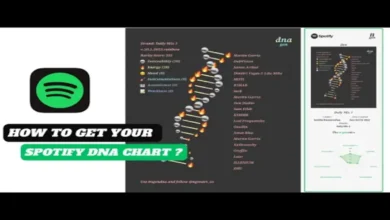In the vast expanse of science fiction, the Borg stand out as one of the most iconic and chilling antagonists. These cybernetic beings, originating from the Star Trek universe, are known for their relentless quest for assimilation and their eerie collective consciousness. Among the many intriguing aspects of the Borg are their names—unique, systematic, and deeply tied to their hive-mind culture. In this article, we’ll delve into the world of Borg names, exploring their origins, significance, and the impact they have on our understanding of this formidable alien species.
The Evolution of Borg Names: From Concept to Canon
The Genesis of Borg Naming Conventions
The concept of the Borg was introduced in “Star Trek: The Next Generation” in 1989, and their names quickly became a topic of interest for fans and scholars alike. Initially, the naming conventions for the Borg were shrouded in mystery, reflecting their complex and collective nature. Unlike most alien species in science fiction, Borg names are not arbitrary but follow a distinct pattern that underscores their assimilation-driven culture.

Borg names are typically structured in a way that reflects their role within the collective. The most recognizable aspect is the use of a numerical designation preceded by a designation or function. For instance, characters like “Seven of Nine” or “Nine of Ten” are commonly known among fans. These names signify their specific place within the Borg hierarchy and their collective identity. The evolution of these names mirrors the evolution of the Borg themselves, from a mysterious threat to one of the most defined and complex species in the Star Trek universe.
The Significance of Numerical Designations
The numerical aspect of Borg names is central to understanding their societal structure. Each Borg drone is assigned a number that indicates its order of assimilation or function within the collective. This numbering system is not merely a method of identification but a reflection of their position in the collective hierarchy. For instance, the designation “Seven of Nine” implies that the drone was the seventh assimilation in a group of nine, highlighting a specific point within a larger sequence.
The use of numerical designations also serves to dehumanize the Borg drones, stripping away any individual identity and reinforcing their collective consciousness. This systematic approach to naming underscores the Borg’s core philosophy of assimilation and uniformity. It emphasizes the idea that each drone is a mere cog in the vast machinery of the collective, contributing to the larger goal of perfection through assimilation.
From Individuality to Collective Identity
One of the most fascinating aspects of Borg names is their transition from individuality to collective identity. When a Borg drone is first assimilated, it retains some semblance of its previous identity but gradually loses it as it becomes more integrated into the collective. This loss of individual identity is mirrored in the naming conventions, where personal names are replaced by numerical designations that reflect their role within the collective.
The shift from personal names to numerical designations illustrates the Borg’s view of identity as a fluid and interchangeable concept. It highlights the tension between individuality and the collective, showcasing how the Borg value functionality and uniformity over personal distinction. This evolution in naming conventions provides insight into the broader themes of assimilation and identity that are central to the Borg’s narrative.
The Psychological and Cultural Impact of Borg Names
The Dehumanization of the Borg Through Naming
The Borg’s naming conventions play a crucial role in their portrayal as dehumanized entities. By stripping away individual names and replacing them with numerical designations, the Borg are depicted as a collective rather than a collection of individuals. This dehumanization serves to emphasize their role as a formidable and impersonal force in the Star Trek universe.
The use of numerical designations also reinforces the idea that the Borg are driven by a singular, unifying goal: assimilation. This focus on collective identity over personal distinction underscores their relentless pursuit of perfection through the absorption of other species. It also serves to create a sense of foreboding, as the Borg appear less like individuals and more like an overwhelming, monolithic entity.
Cultural Reflection and Representation
Borg names also reflect broader cultural themes and anxieties. The notion of a collective consciousness and the loss of individual identity resonate with real-world concerns about the impact of technology and globalization on personal autonomy. The Borg’s naming conventions can be seen as a metaphor for the ways in which technology and societal pressures can erode individuality and create a sense of conformity.
The portrayal of Borg names also raises questions about the nature of identity and the ways in which it can be shaped or controlled by external forces. By examining the Borg’s naming conventions, we gain insight into the cultural anxieties surrounding technology, conformity, and the loss of personal agency. This reflection on identity and technology is a key aspect of the Borg’s narrative and contributes to their enduring appeal as a symbol of existential threat.
Fan Interpretations and Cultural Impact
The Borg names have inspired numerous fan interpretations and analyses, highlighting their impact on popular culture. Fans have explored the significance of the numerical designations, the implications for individual identity, and the broader cultural themes represented by the Borg. This engagement with Borg names underscores their relevance and the way they resonate with audiences.
The cultural impact of Borg names extends beyond the Star Trek universe, influencing discussions about technology, identity, and collective consciousness in various contexts. The Borg serve as a powerful symbol of the potential dangers of technological advancement and the loss of individuality, making their naming conventions a focal point for exploring these themes. The fascination with Borg names reflects a broader interest in how science fiction can address and critique contemporary issues.
Decoding Famous Borg Names: Case Studies and Analysis
Seven of Nine: The Most Notable Borg
Among the Borg, “Seven of Nine” stands out as one of the most recognizable and well-developed characters. Introduced in “Star Trek: Voyager,” Seven of Nine is a former Borg drone who is rescued by the crew of the starship Voyager. Her name reflects her former identity within the collective and her complex journey towards reclaiming her individuality.
The name “Seven of Nine” signifies her position as the seventh assimilation in a group of nine, providing insight into her role within the Borg hierarchy. This numerical designation highlights her former status as part of a larger collective unit and contrasts with her evolving identity as she integrates with the Voyager crew. The character’s journey from a Borg drone to a more individualized persona underscores the tension between collective identity and personal autonomy.
Locutus of Borg: The Voice of the Collective
“Locutus of Borg” is another iconic Borg name, associated with Captain Jean-Luc Picard’s assimilation into the collective in “Star Trek: The Next Generation.” The name “Locutus” derives from the Latin word for “speaker,” reflecting his role as the spokesperson for the Borg during this period.
The choice of name for Picard’s Borg persona underscores the importance of communication and control within the collective. As Locutus, Picard becomes the voice of the Borg, conveying their demands and threats to the crew of the Enterprise. This name highlights the Borg’s strategy of using assimilated individuals to communicate with other species, showcasing their ability to manipulate and coerce through familiar channels.
Hugh: The Borg Drone with a Unique Name
Unlike most Borg drones, “Hugh” is an example of a name that deviates from the standard numerical designation. Introduced in “Star Trek: The Next Generation,” Hugh is a Borg drone who gains individuality after an encounter with the crew of the Enterprise. His name reflects his journey towards self-awareness and personal identity.
Hugh’s name is significant because it represents a departure from the Borg’s usual naming conventions. It symbolizes his struggle to reclaim his individuality and assert his own identity outside of the collective. This unique naming choice highlights the potential for personal growth and transformation, even within the rigid structure of the Borg.
The Role of Borg Names in the Star Trek Universe
Borg Names and Their Narrative Function
In the Star Trek universe, Borg names serve a crucial narrative function, helping to convey the collective nature of the Borg and their assimilation practices. The use of numerical designations emphasizes the dehumanizing effects of assimilation and underscores the Borg’s focus on collective identity over individual distinction.
Borg names also contribute to the development of key characters and plotlines. Characters like Seven of Nine and Locutus of Borg play significant roles in exploring themes of identity, autonomy, and the impact of assimilation. Their names are integral to their character arcs and the overall narrative, providing insight into their struggles and transformations.
The Impact of Borg Names on Storytelling
The naming conventions of the Borg have a profound impact on storytelling within the Star Trek franchise. By using numerical designations and specific names for key characters, the series creates a sense of structure and hierarchy within the Borg collective. This approach helps to convey the complexity of the Borg and their interactions with other species.
The impact of Borg names extends beyond individual episodes or storylines, influencing the broader themes and messages of the series. The focus on collective identity, assimilation, and the loss of individuality is central to the Borg’s narrative and contributes to the series’ exploration of complex philosophical and ethical questions.
Borg Names as a Symbol of Technological Advancement
Borg names also serve as a symbol of technological advancement and its impact on society. The numerical designations and systematic approach to naming reflect the Borg’s emphasis on efficiency, functionality, and the integration of technology with biology. This focus on technological advancement is a key aspect of the Borg’s identity and contributes to their portrayal as a formidable and existential threat.
The use of Borg names to represent technological themes highlights the series’ exploration of the potential consequences of unchecked technological progress. The Borg serve as a cautionary tale about the dangers of losing individuality and autonomy in the pursuit of technological perfection. Their names are a reflection of these themes, emphasizing the ways in which technology can shape and control identity.
The Influence of Borg Names on Popular Culture
Borg Names in Fan Fiction and Media
The fascination with Borg
YOU MAY ALSO READ




